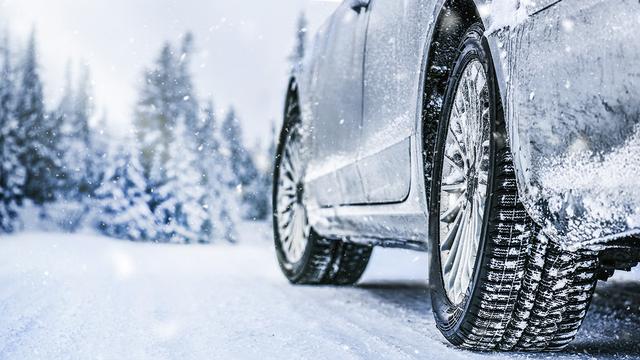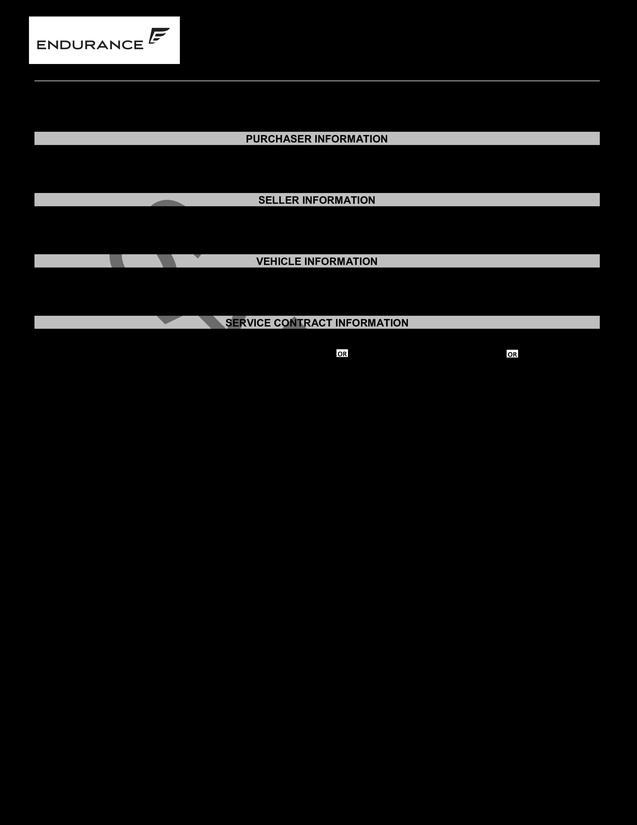5 best winter tires for driving in snow and ice (2021)
Winter tires are a necessity for some drivers, but not all.
We researched dozens of models to narrow down the five best winter tires on the market.
We rate each winter tire based on industry testing standards, customer reviews, and affordability.
Deciding which tires to buy can be difficult, especially when it comes time to switch out your standard tires for winter tires. In this article, we review the best winter tires on the market based on traction performance, price point, weather-specific technology, and more. We also discuss the basics of winter tires, how much they typically cost, and which drivers should purchase these specialty tires.
If your standard tires are worn out and need to be replaced as well, you can take a look at our all-season buyer’s guide, which names the 10 best tires and brands on the market. To start comparing the best winter tires, visit Tire Rack and Discount Tire.
5 Best Winter Tires
1. Michelin X-Ice Xi3
2. Bridgestone Blizzak WS90
3. Dunlop Winter Maxx WM02
4. General AltiMAX Arctic
5. Continental Winter Contact TS830
What Is a Winter Tire?
Studded vs. Studless Winter Tires
Do You Need Winter Tires?
How Much Do Winter Tires Cost?
Our Top Recommendations for Tires
Michelin: Best Tires Overall
Goodyear: Best for Durability
What are the best winter tires to buy?
What are the top 10 winter tires?
Which tires are best for icy roads?
5 Best Winter Tires
To narrow down the five best winter tires currently available, our review team considered affordability, studdable versus studless tires, and overall performance.
We included data from Tire Rack’s Studless Snow & Ice Winter Tires study to get a better idea of how these tires drive in winter conditions. The study tested how four winter tires performed on different surfaces – expressway, state highway, and county roads – on a 2014 BMW F30 328i sedan.
The top five winter tires for 2021 include:
Michelin X-Ice Xi3 – Shop on Tire Rack and Discount Tire.
Bridgestone Blizzak WS90 – Shop on Tire Rack and Discount Tire.
Dunlop Winter Maxx WM02 – Shop on Tire Rack and Discount Tire.
General AltiMAX Arctic – Shop on Tire Rack and Discount Tire.
Continental Winter Contact TS830 – Shop on Tire Rack and Discount Tire.
1. Michelin X-Ice Xi3
The Michelin X-Ice Xi3 is a studless winter tire for all low-temperature road conditions – dry, wet, snow, ice, slush. In Tire Rack’s Winter Tires study, this model performed better in wet cornering tests than the other three tire models and came in a close second-place in dry tests. It also had the second-highest score for snow handling and traction. While it’s an older model, the Michelin X-Ice Xi3 is tried and tested. It comes in a variety of sizes to fit cars, light trucks, and SUVs.
Michelin tires are often costly, and the Michelin X-Ice Xi3 model is no exception. However, this Michelin model comes with a 40,000-mile tread life warranty, which balances out the cost in the long run. Shop the Michelin X-Ice Xi3 on Tire Rack and Discount Tire.
2. Bridgestone Blizzak WS90
In Tire Rack’s Winter Tires study, the Bridgestone Blizzak WS80 scored best for braking abilities in dry and wet winter driving conditions. On both surfaces, this Bridgestone model stopped a full three to four feet earlier than the second-place model. Its upgrade, the Bridgestone Blizzak WS90, only improves on this tried-and-true performance.
Bridgestone uses Nano Pro-Tech
®
to build its tires on a molecular level. According to the tire manufacturer, the Bridgestone Blizzak WS90 features specially designed rubber molecules that bind more easily with silica particles, a key part of gripping wet roads. This innovation, combined with the Blizzak WS90’s tread design and comfortability, makes it one of the best winter tires in the industry. Shop the Bridgestone Blizzak WS90 on Tire Rack and Discount Tire.
3. Dunlop Winter Maxx WM02
Another highly-rated winter tire, the Dunlop Winter Maxx WM02 was not tested in Tire Rack’s Winter Tires study. However, its predecessor, the WM01, performed well. Both models sport an asymmetrical tread pattern and provide strong traction in snowy and icy conditions.
Be aware that the model has faced some customer complaints about braking on ice and acceleration in deep snow. The tire performs well while in motion, but starting and stopping can be an issue. Shop the Dunlop Winter Maxx WM02 on Tire Rack and Discount Tire.

4. General AltiMAX Arctic
A studdable winter tire, the General AltiMAX Arctic model comes in several sizes. The tire performs well in most winter conditions, providing solid wet and dry traction, snow traction, and overall comfort. This family of General tires uses a directional tread pattern to optimize its performance on both wet and dry roads.
General AltiMAX Arctic models are usually more affordable than Michelin or Bridgestone tires, and many customers report they withstand harsh weather well in winter seasons. Shop the General AltiMAX Arctic on Tire Rack and Discount Tire.
5. Continental Winter Contact TS830
A studless winter tire, the Continental WinterContact TS830P maintains flexibility and grip in low temperatures. The broad shoulder blocks improve dry handling, while the tread design grips ice and snow.
Customer reviews say the tires perform well at higher speeds in rain and in dry cold conditions. Continental designed these tires for owners of sports cars and luxury sedans who want to enjoy the ride during the winter. Shop the Conti
nental Winter Contact TS830 on Tire Rack and Discount Tire.What Is a Winter Tire?
Winter tires, sometimes called snow tires, are designed to grip and safely move through snow, ice, and other harsh winter conditions. They’re formulated with different rubber compounds for maximum flexibility, even in sub-zero temperatures.
Winter tires may sport a three-peak mountain snowflake (3PMSF) symbol. According to Tire Rack, this “indicates the tire meets required performance criteria in snow testing to be considered severe snow service-rated.” However, Tire Rack also notes that 3PMSF testing only covers “a tire’s acceleration traction on medium-packed snow” and does not include the tire’s ability to brake and turn in winter conditions.
Thanks to modern technological innovations, winter tires can transition from wet to dry winter roads with little issue. However, winter tires shouldn’t be used year-round. Typically, winter tires should be put on in late November and taken off around February or March.
Studded vs. Studless Winter Tires
In recent years, studded tires have gone by the wayside, as many states have banned their use. Some states still allow studded tires, but with rubber studs rather than metal. While studdable tires can “bite” into snow, they don’t perform well in any other winter weather conditions and they tend to damage roadways.
Studless winter tires instead rely on deeper tread design, sharper tire edges, and flexible rubber materials to move through snow and ice.
Do You Need Winter Tires?
Drivers who regularly drive in snowy, icy, or cold-weather road conditions should consider purchasing winter tires. As the name suggests, winter tires are not only for snow. Often, the material of non-winter tires cannot withstand colder temperatures.
Drivers who opt to keep their all-season tires on during the winter months may run into what’s called glass temperature transition. Rubber typically begins to behave differently at temperatures around and below 45 degrees Fahrenheit. Rather than its usual soft, flexible structure, cold rubber begins to harden and crack, much like glass. This state can severely impact a tire’s traction and overall performance.
So, if you live in an area that regularly experiences temperatures below 45 degrees, winter tires are likely a good investment.
Winter tires are also critical for road safety. Improper traction and tire rigidity can lead to serious accidents in inclement weather. Around 21 percent of annual car accidents are caused by bad weather, according to the Federal Highway Administration.
How Much Do Winter Tires Cost?
According to Edmunds.com, winter tires cost between $150 to almost $190 per tire. While this may be a higher cost than many other types of tires, keep in mind that you can store and use the same set of winter tires for two to three years, so you shouldn’t be paying to replace them each winter.
Here’s how much each of the best winter tires costs on Tire Rack:
Michelin X-Ice Xi3: $124.41 (215/60R16)
Bridgestone Blizzak WS80: $149.69 (215/60R16)
Dunlop Winter Maxx WM02: $124.99 (225/60R17)
General AltiMAX Arctic Tire: $113.99 (215/65R17)
Continental WinterContact SI: $105.11 (205/50R17)
Like non-specialty tires, the cost of winter tires varies based on tire size, manufacturer, and the vehicle you drive.
Our Top Recommendations for Tires
Tires are an often-underappreciated part of a driving experience. Quality tires can change how your vehicle handles, improve its fuel economy, and increase its overall safety performance. Before purchasing any new set of tires, it’s best to compare a few different tire models. We recommend Michelin tires and Goodyear tires.
Michelin: Best Tires Overall
Michelin not only produces excellent winter tires but highly regarded models across almost all tire categories as well. In our 2021 review of the industry’s best tires, we determined Michelin to offer the best models on the market. While Michelin tires tend to be pricier, their quality and performance make them a worthy financial investment.
Compare Michelin tire models on Tire Rack and Discount Tire.
Goodyear: Best for Durability
Another top-tier tire brand, Goodyear boasts some of the most durable tires in the industry, especially when it comes to all-terrain and mud-terrain models. While Goodyear tires have a higher price tag, the company’s rigorous testing standards should put most drivers at ease – Goodyear’s quality is industry-backed and customer-backed.
Compare Goodyear tire models on Tire Rack and Discount Tire.
What are the best winter tires to buy?
After comparing multiple models, we rate the Michelin X-Ice Xi3 as the best winter tire to buy. Our top picks also include the Bridgestone Blizzak WS90 and the Dunlop Winter Maxx WM02. All of these models perform well in wet and snowy conditions as well as cold dry conditions.
What are the top 10 winter tires?
The top 10 winter tires are the Michelin X-Ice XI3, Bridgestone Blizzak WS90, Dunlop Winter Maxx WM02, General AltiMAX Arctic, Continental WinterContact TS830, Pirelli, Zero FR, Nordman 7 SUV, Toyo Observe GSi6-LS, Goodyear Winter Command, and Yokohama iceGuard GO75.
Which tires are best for icy roads?
Michelin X-Ice Xi3 and Bridgestone Blizzak WS90 have performed well in various winter driving tests and provide excellent traction on ice. The Bridgestone Blizzak DM-V2 version is suitable for large SUVs and crossovers (purchased on tire racks or discount tires).
-
Latest
 What is a vehicle service contract, do you need a copy?
What is a vehicle service contract, do you need a copy?Vehicle service contracts can save you expensive car repair costs.Manufacturers and third-party providers both offer vehicle service contracts.Extended protection can be a worthwhile financial investm...
-
Next
 Rate Lincoln's warranty (2021)
Rate Lincoln's warranty (2021)Lincoln's warranty is better than the average of luxury brands.The warranty includes lifetime roadside assistance for the vehicle’s original owner.Certified pre-owned warranty coverage is generous, es...
Popular Articles
- The Canadian government invests in the first Canadian-made electric car
- Stellantis strengthens electrification
- 2022 Ford Maverick debuts
- The Canadian government requires 100% of Canadian car and bus sales to achieve zero emissions by 2035
- Extend electric car rebates to businesses and non-profit organizations BC
- New general manager of ADESA offices in the U.S. and Canada
